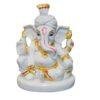Varalakshmi Vratham, also known as Varalakshmi Nombu, is a significant Hindu festival dedicated to Goddess Lakshmi, the consort of Lord Vishnu and the embodiment of wealth and prosperity. This auspicious occasion falls on the last Friday during the Shravana Shukla Paksha, which is the waxing phase of the moon in the Hindu month of Shravana. In 2024, Varalakshmi Vratham is observed on Friday, August 16.
The festival holds deep spiritual and cultural importance, particularly for women in South India. According to the legend, Lord Shiva himself instructed his consort, Goddess Parvati, to observe the Varalakshmi Vratham to seek prosperity and happiness for their family. Thus, this ritual is considered highly auspicious and is believed to bestow blessings upon those who observe it with devotion.
Rituals of Varalakshmi Vratham
The rituals of Varalakshmi Vratham are an integral part of the festival, and they are performed with devotion and sincerity to seek the blessings of Goddess Lakshmi. The following are the key rituals observed during Varalakshmi Vratham:
1. Preparations:
– The festival falls on the last Friday during the month of Shravana (Shravana Shukla Paksha).
– Devotees wake up early in the morning and clean their homes before starting the rituals.
– A dedicated puja altar is set up, typically facing the east or north direction.
2. Kalasam:
– The centrepiece of the puja is the Kalasam, which represents Goddess Lakshmi.
– A brass or silver pot (Kalasam) is chosen and cleaned. It is then filled with water or rice (symbolizing abundance and fertility).
– Five types of leaves (Mango, Neem, Banyan, Peepal, and Tulsi) are arranged around the neck of the Kalasam, representing the five elements and the presence of divinity.
– A coconut smeared with turmeric is placed over the Kalasam and covered with a new cloth, often a saree.
3. Decoration and Offerings:
– The Kalasam is decorated with vermilion, sandalwood paste, and flowers.
– Sweets, fruits, betel nuts, and coins are kept in front of the Kalasam as offerings to the Goddess.
4. Varalakshmi Puja Vidhanam (Puja Procedure):
– The puja is generally performed by married women, though other family members can also participate.
– The puja begins with the worship of Lord Ganesha for removing obstacles and seeking his blessings for a successful puja.
– Following Ganesha puja, Goddess Lakshmi is invoked into the Kalasam through sacred chants and mantras.
– Devotees offer flowers, incense, and aarti (waving of lamps) to the Goddess.
– The priest or the person performing the puja narrates the Varalakshmi Vratham Katha (story) to all present.
5. Fasting:
– Observing a fast is an essential aspect of Varalakshmi Vratham.
– Married women, and sometimes unmarried women, fast on this day to seek the well-being of their families and the long life of their husbands.
– The fast usually extends from sunrise to sunset.
– Some devotees observe a strict water-only fast, while others may consume fruits and milk.
6. Varalakshmi Aarti and Blessings:
– After completing the puja, an aarti is performed to conclude the ritual.
– Family members seek the blessings of Goddess Lakshmi for prosperity, wealth, and well-being.
7. Distribution of Prasadam:
– The food items offered during the puja are considered blessed (prasadam).
– The prasadam is distributed among family members, friends, and relatives as a token of divine blessings.
It is important to note that specific rituals and customs may vary slightly based on regional and cultural traditions. The essence of Varalakshmi Vratham remains the same across various regions, which is to seek the grace of Goddess Lakshmi for prosperity, happiness, and the overall well-being of the family.
Fasting and Observance in Varalakshmi Vratham

1. Significance of Fasting in Varalakshmi Vratham:
Fasting is an essential aspect of Varalakshmi Vratham, observed primarily by married women seeking the well-being of their families and the blessings of Goddess Lakshmi. Fasting during this auspicious day is believed to purify the body and mind and create a deeper connection with the divine. It is considered a gesture of devotion and self-discipline, signifying the devotee’s earnest desire for prosperity and happiness for their loved ones.
2. Foods Allowed and Avoided During the Fast:
During Varalakshmi Vratham, participants observe a strict fast, abstaining from regular meals and consuming specific types of foods. The fasting rules may vary from region to region, but commonly, participants refrain from consuming grains, non-vegetarian food, onions, and garlic. Some regions allow the consumption of fruits, milk, and water, while others might practice a complete water-only fast. The strict adherence to these dietary restrictions reflects the devotee’s commitment and reverence for the occasion.
3. Rituals and Offerings During the Puja:
On the day of Varalakshmi Vratham, women wake up early and perform ritualistic preparations. They clean their homes, set up the puja altar, and decorate a Kalasam, a sacred pot symbolizing Goddess Lakshmi. The Kalasam is adorned with vermillion, sandalwood paste, and flowers as offerings. The main puja involves the recitation of mantras and prayers dedicated to the Goddess. Women offer flowers, fruits, sweets, and other traditional delicacies as “Vayana” to Goddess Lakshmi during the puja.
4. Importance of the Mantra “Om Hreem Shreem Lakshmibhayo Namah”:
Chanting the sacred mantra “Om Hreem Shreem Lakshmibhayo Namah” holds immense significance during Varalakshmi Vratham. This mantra is believed to invoke the blessings and grace of Goddess Lakshmi, who is revered as the bestower of wealth, prosperity, and abundance. The repetition of this mantra during the puja is thought to strengthen the devotee’s spiritual connection with the divine and invite positive energy into their lives.
5. Breaking the Fast and Varalakshmi Prasadam:
After the completion of the evening puja and aarti, participants break their fast with great enthusiasm. The Prasadam, consisting of traditional foods like rice porridge, jaggery sweets, and lentils, is served to the devotees and guests. Consuming the Prasadam is considered highly auspicious, and it is believed to carry the blessings of the Goddess.
Fasting and observance during Varalakshmi Vratham go beyond mere rituals; they symbolize the devotee’s deep faith, devotion, and willingness to seek the grace and blessings of Goddess Lakshmi for the prosperity, harmony, and well-being of their families.
Spiritual Significance and Benefits

The Varalakshmi Vratham festival holds a special spiritual meaning that goes beyond its rituals. It’s about devotion and inner change. People benefit from it in various ways:
1. Devotion and Surrender: The festival is a way for people to show their deep devotion and surrender to Goddess Lakshmi, who represents wealth and prosperity. By observing the Vratham, they express their faith in the divine and seek blessings and guidance from the Goddess.
2. Purification of Mind and Body: Fasting and puja rituals during Varalakshmi Vratham help purify the mind and body. Fasting is believed to detoxify the body and clear it of impurities, while prayers and rituals calm the mind and reduce distractions.
3. Self-Discipline and Control: Following the strict fasting rules requires self-discipline and control over desires. This helps develop self-control and important virtues for spiritual growth.
4. Connection with the Divine: Varalakshmi Vratham provides a unique chance for people to strengthen their spiritual connection with Goddess Lakshmi. Chanting mantras, praying, and performing rituals create a sacred atmosphere, bringing devotees closer to the divine.
5. Cultivation of Gratitude: The festival encourages gratitude for the blessings and abundance already present in people’s lives. It teaches them to be content and recognize that true wealth includes inner peace and happiness, not just material possessions.
6. Removal of Obstacles: Sincerely observing Varalakshmi Vratham is believed to remove obstacles and negative energies from life, protecting the devotee and ensuring a smoother path towards prosperity and success.
7. Inner Transformation: Varalakshmi Vratham is not just an external ritual; it also fosters inner transformation. Through devotion, selflessness, and humility, people seek to cultivate virtues that lead to spiritual growth.
8. Family Harmony and Peace: Prayers during Varalakshmi Vratham are not only for individual prosperity but also for the well-being and harmony of the entire family. The festival promotes unity and a peaceful environment at home.
9. Sense of Community and Tradition: Varalakshmi Vratham is celebrated with enthusiasm and participation in the community. It strengthens bonds among people, creating a sense of belonging and preserving cultural and spiritual traditions.
Varalakshmi Vratham has significant spiritual meaning for its devotees. It offers a chance for introspection, devotion, and seeking the blessings of Goddess Lakshmi. The festival’s benefits go beyond material gains, focusing on inner growth, self-awareness, and a deeper connection with the divine.
Mahurat
Muhurat refers to the auspicious timings or periods during which specific rituals or ceremonies are considered most favourable for conducting. The timings mentioned for Varalakshmi Vratam represent the different Lagna Puja Muhurats available on Friday, August 16, 2024, based on the UAE (United Arab Emirates) time zone.
1. Simha Lagna Puja Muhurat (morning) – 05:59 AM to 08:13 AM: This period in the morning is considered auspicious for conducting the Varalakshmi Vratham puja if the Lagna (Ascendant) is in the Simha (Leo) zodiac sign.
2. Vrishchika Lagna Puja Muhurat (afternoon) – 12:42 PM to 02:59 PM: This afternoon slot is another favourable time for performing the Varalakshmi Vratham puja if the Lagna (Ascendant) is in the Vrishchika (Scorpio) zodiac sign.
3. Vrishchika Lagna Puja Muhurat (afternoon) – 12:09 PM to 02:26 PM: This is a repetition of the above-mentioned afternoon slot, which signifies its importance as an auspicious timing for the puja.
4. Kumbha Lagna Puja Muhurat (evening) – 06:49 PM to 08:20 PM: The evening period is considered propitious for performing the Varalakshmi Vratham puja if the Lagna (Ascendant) is in the Kumbha (Aquarius) zodiac sign.
5. Vrishabha Lagna Puja Muhurat (midnight) – 11:27 PM to 01:24 AM, Aug 17: This timing, late at night, is also deemed auspicious for conducting the Varalakshmi Vratham puja if the Lagna (Ascendant) is in the Vrishabha (Taurus) zodiac sign.
Note: The mentioned Muhurat timings are based on the UAE time zone, so devotees in the UAE can refer to these timings for conducting the Varalakshmi Vratham puja on Friday, August 16, 2024.
Conclusion
Varalakshmi Vratham is a significant festival of prosperity and devotion dedicated to Goddess Lakshmi. The rituals, fasting, and prayers during this auspicious occasion foster spiritual connection, inner transformation, and gratitude. Observing the festival with faith and sincerity brings blessings and harmony to families, invoking the divine grace of Goddess Lakshmi.



















Add comment